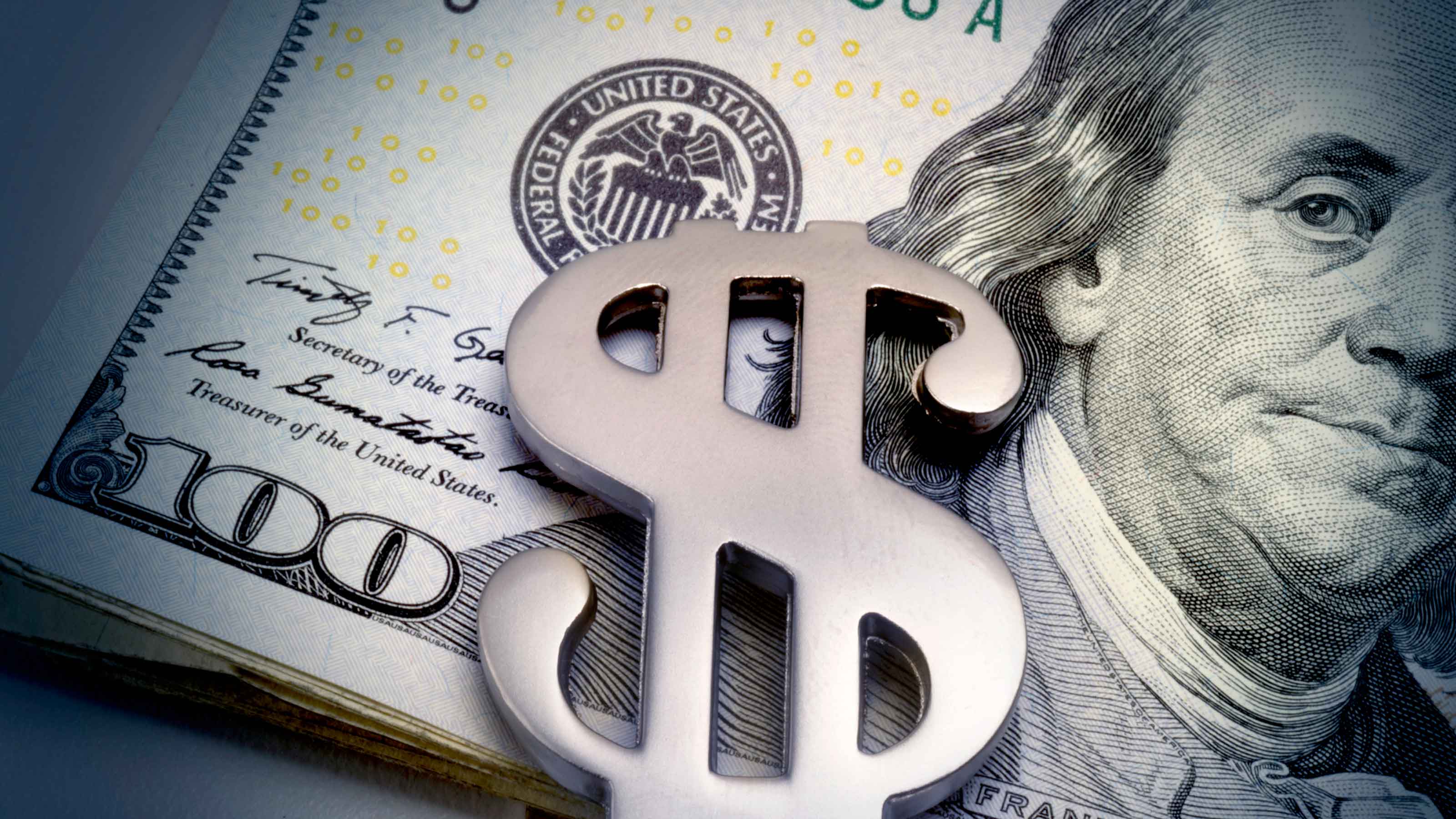Chinese Stocks Still Hold Long-Term Promise
Political threats to China's economy are real. But they are also well known and already reflected in stock prices.


China has faced daunting challenges this year. Hong Kong erupted in political protests, COVID-19 got its start in Wuhan, relations with the U.S. deteriorated sharply, and the economy shrank 6.8% in the first quarter, nearly two points worse than the rate of decline in America. In fact, for Chinese stocks, it has been a rough five years, with the MSCI China index returning just 2.5% annualized, compared with 8.6% for MSCI’s USA index. (Prices, returns and other data are as of June 12.)
Still, I like China as a long-term investment for a lot of reasons. The most obvious is that, despite threats from the U.S., China is too big for America to do without. China has four times the population of the U.S. and two-thirds of the gross domestic product, with the economic gap closing rapidly. Even with COVID, Chinese GDP is expected to grow by 1% this year, easily the best performance among major countries, according to projections by the Economist Intelligence Unit, a division of the Economist Group media company. The estimate for Europe is a decline of 8.0%; Kiplinger currently projects U.S. GDP to shrink by 5.7%.
China’s markets have also matured, and volatility has dramatically declined. The Shanghai Stock Exchange 50, an index composed of the “A” shares (that is, shares that can be traded only by Chinese citizens and large foreign institutions) of 50 large and representative Chinese companies, dropped just 16% from the start of 2020 through its low on March 23. That compares with a loss of 35% over the same period for the Dow Jones industrial average, its U.S. analogue.
From just $107.88 $24.99 for Kiplinger Personal Finance
Become a smarter, better informed investor. Subscribe from just $107.88 $24.99, plus get up to 4 Special Issues

Sign up for Kiplinger’s Free Newsletters
Profit and prosper with the best of expert advice on investing, taxes, retirement, personal finance and more - straight to your e-mail.
Profit and prosper with the best of expert advice - straight to your e-mail.
Best of all, Chinese stocks are relatively cheap. At this unusual time of business disruption and high unemployment, traditional valuation measures are distorted. Still, the differences are so wide, they can’t be ignored. The price-earnings ratio of the MSCI China index, which captures 85% of the value of the country’s markets, was 12.5 at the end of May. That contrasts with a P/E of 22.0 for the MSCI USA index.
China Mobile (symbol CHL, $35), the giant Chinese telecom company, carries a P/E of just 9, based on estimated earnings for the year ahead; by contrast, U.S. wireless behemoth Verizon Communications has a P/E of 12. The P/E of Alibaba (BABA, $218), the Hangzhou-based online retail platform, is about one-quarter that of Amazon.com. Well-capitalized China Construction Bank (CICHY, $16), with 15,000 branches, has a P/E of 5, compared with JPMorgan Chase at 15. (Stocks I like are in bold.)
Growing tensions. U.S.–China relations are at a low ebb, in part because of China’s behavior in the early stages of the pandemic. The U.S. Senate in May passed a bill aimed at Chinese firms listed on Nasdaq and the New York Stock Exchange. It would require greater accounting disclosure, and companies would be delisted if they are “owned or controlled by a foreign government,” as many Chinese firms are. U.S. shareholders would still be able to trade Chinese stocks in the U.S. over-the-counter market (in “pink sheet” listings) or on foreign exchanges.
Although the delisting bill is unlikely to have much effect on Chinese stocks, political threats to China’s economy are real. But they are also well known and already reflected in stock prices. Rather than being distracted by the crisis du jour, investors should simply focus on buying good companies at good prices.Two of those companies are TAL Education Group (TAL, $64) and New Oriental Education and Technology Group (EDU, $128). Both are huge players in a white-hot sector in a country whose families are obsessed with getting their children a good education. TAL, with a market value of $38 billion, offers tutoring to K-12 students through more than 1,000 centers in 50 Chinese cities. New Oriental, with a market cap of $20 billion, focuses on test preparation and language training.
Both are on a tear. TAL’s revenues have tripled in the past three years, and New Oriental’s have doubled. TAL shares are up nearly 75% in the past 12 months, but the growth potential is enormous. New Oriental was on my list of 10 stocks for the year ahead back in 2010, when it was trading at $18 a share, but I still recommend it.
A riskier choice with strong potential is Trip.com Group (TCOM, $27), which provides tours, reservations and other travel services within China and internationally. Trip.com was hammered by COVID, and shares dropped from $39 to $22. They have since rebounded a bit, but the stock appears to be a bargain. Meituan Dianping (MPNGY, $43), an e-commerce platform with a large food ordering and delivery service, may have benefited from the epidemic, as millions of Chinese stayed put. The stock has doubled since mid March, but it is still attractive. Meituan’s revenues have tripled in just two years.
Bet on the home market. With all the trade turmoil, I prefer stocks that primarily sell to domestic customers. Another example is Ping An Insurance (PNGAY, $21), which sells life, health, property and casualty protection and also offers banking services and credit cards. It’s a huge company that has moved aggressively into fintech (the buzzword for financial technology). Ping An has a market cap of $226 billion and a very non-techie P/E of 10. With a yield of 3.5%, it’s a good bet on the long-term Chinese economy.
Among exchange-traded funds, consider iShares MSCI China (MCHI, $64), which tracks the index and owns a broad swath of large- and mid-cap stocks. Still, it’s top-heavy, with Alibaba and Tencent Holdings, the multinational social-media conglomerate, together representing about one-third of assets. You can get a more balanced portfolio with iShares China Large-Cap (FXI, $40), which follows the FTSE 50 China index. Its expense ratio is 0.74%, compared with 0.59% for the ETF based on the MSCI index.
Among mutual funds, I have long been a fan of the stock pickers at Matthews Asia. Their Matthews China (MCHFX) fund has justified its 1.09% expense ratio by beating the MSCI index by an annual average of 3.5 percentage points over the past five years. Managers Winnie Chwang and Andrew Mattlock are making heavy bets on technology, investing in not only Alibaba and Tencent but also JD.com (JD, $58), a fast-growing e-commerce company. Fidelity China Region (FHKCX), which also owns a few outliers from Taiwan, South Korea and the U.S., has an index-beating record, too. With a relatively modest expense ratio for a managed China fund of 0.95%, its portfolio includes Pinduoduo (PDD, $73), yet another booming e-commerce play.
For a riskier approach, turn to Matthews China Small Companies (MCSMX). It charges hefty expenses of 1.38% but has a spectacular track record: a five-year annual average return of 15.0%. Most of the fund’s stocks don’t trade on U.S. exchanges; you have probably never heard of such holdings as Silergy, which makes high-tech devices that cut commercial energy use, or Sichuan Teway Food Group, a maker of seasonings and other condiments. But that’s why you buy a fund like this one.
Chinese government influence over business decisions in such sectors as banking and telecom is a problem for investors, and it’s not hard to conjure up disastrous scenarios for the Chinese economy: military confrontation, an uncontrollable rebellion in Hong Kong, much higher energy prices, severe new trade barriers or even another epidemic. But investors would be foolish to ignore a country with a population so large, talented, entrepreneurial and eager to succeed.
James K. Glassman chairs Glassman Advisory, a public-affairs consulting firm. He does not write about his clients. He owns none of the stocks mentioned. His most recent book is Safety Net: The Strategy for De-Risking Your Investments in a Time of Turbulence.
Profit and prosper with the best of Kiplinger's advice on investing, taxes, retirement, personal finance and much more. Delivered daily. Enter your email in the box and click Sign Me Up.

-
 10 Cheapest Places to Live in Washington
10 Cheapest Places to Live in WashingtonProperty Tax Is Washington your go-to ski destination? These counties combine no income tax with the lowest property tax bills in the state.
-
 Healthy to 100: Secrets from Countries Where Retirees Age Best
Healthy to 100: Secrets from Countries Where Retirees Age BestLongevity is a team sport, according to author Ken Stern. Here's the secret sauce for living long, healthy lives from countries like Italy and Japan.
-
 My First $1 Million: Semiretired CPA, 68, San Francisco
My First $1 Million: Semiretired CPA, 68, San FranciscoEver wonder how someone who's made a million dollars or more did it? Kiplinger's My First $1 Million series uncovers the answers.
-
 White House Probes Tracking Tech That Monitors Workers’ Productivity: Kiplinger Economic Forecasts
White House Probes Tracking Tech That Monitors Workers’ Productivity: Kiplinger Economic ForecastsEconomic Forecasts White House probes tracking tech that monitors workers’ productivity: Kiplinger Economic Forecasts
-
 Investing in Emerging Markets Still Holds Promise
Investing in Emerging Markets Still Holds PromiseEmerging markets have been hit hard in recent years, but investors should consider their long runway for potential growth.
-
 5 Big Tech Stocks That Are Bargains Now
5 Big Tech Stocks That Are Bargains Nowtech stocks Few corners of Wall Street have been spared from this year's selloff, creating a buying opportunity in some of the most sought-after tech stocks.
-
 Stocks: Winners and Losers from the Strong Dollar
Stocks: Winners and Losers from the Strong DollarForeign Stocks & Emerging Markets The greenback’s rise may hurt companies with a global footprint, but benefit those that depend on imports.
-
 How to Invest for a Recession
How to Invest for a Recessioninvesting During a recession, dividends are especially important because they give you a cushion even if the stock price falls.
-
 5 Exciting Emerging Markets Funds to Buy
5 Exciting Emerging Markets Funds to BuyForeign Stocks & Emerging Markets Emerging markets funds haven't been immune to global inflationary pressures. But now might be the time to strike on these high-risk, high-reward products.
-
 10 Stocks to Buy When They're Down
10 Stocks to Buy When They're Downstocks When the market drops sharply, it creates an opportunity to buy quality stocks at a bargain.
-
 How Many Stocks Should You Have in Your Portfolio?
How Many Stocks Should You Have in Your Portfolio?stocks It’s been a volatile year for equities. One of the best ways for investors to smooth the ride is with a diverse selection of stocks and stock funds. But diversification can have its own perils.